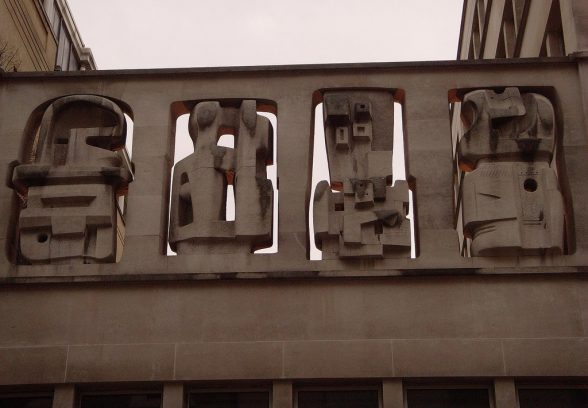This website uses cookies
This website uses cookies to enable it to function properly and to analyse how the website is used. Please click 'Close' to accept and continue using the website.



The Twentieth Century Society has welcomed English Heritage’s publication of reviewed list descriptions for several post-war commercial offices. The special interest in these buildings has now been more clearly identified, which in many cases are the exterior and internally limited to spaces like lobbies and board rooms. When other parts of the building, such as basements and working floors are not of interest, this is said explicitly.
Catherine Croft, director of the Twentieth Century Society said: “Making it clear what’s not important is a sensible way to make the listing process focus on what really matters. Not every part of a listed building is necessarily precious”, she said.
“Listing is now much better understood than it ever has been before, and this is a sensible and pragmatic way to make the process achieve what we all want, with the minimum of fuss. Its based on thorough research and astute analysis”, added Croft.
As part of the project, the Time and Life Building (1953), London, has been upgraded to Grade II* in recognition of the quality of the design and integrated art work, including two commissions by Henry Moore, Ben Nicholson reliefs and Geoffrey Clarke sculpture. The interiors of the building were designed by Sir Hugh Casson, director of architecture at the Festival of Britain.
Another example is Bracken House (1955, London), former headquarters of the Financial Times. It was the first post-war building to be listed in 1987 and is a late example of modern classicism. As English Heritage points out, it has undergone significant change since listing, as the central printing house was rebuilt in 1988-91 for the new owners by Michael Hopkins and Partners. It was cleverly knitted into the wider building and is of such quality that it has been given a special mention within the Grade II* listing.
The 28 buildings that have revised list descriptions are:
Pilkington Glassworks Head Offices, St Helen’s
Pall Mall Court, Manchester
New Century House, Manchester
CIS Building, Manchester
Barclay’s Bank, Plymouth
Royal Bank of Scotland (formerly National Provincial Bank), Plymouth
Grosvenor House, Birmingham
Offices for Carr & Co, Birmingham (Goldfinger House)
Rotunda, Birmingham
WD & HO Wills HQ, Bristol
The Willis Building, Ipswich
Boots D90 HQ, Nottingham
Bird’s Eye, Walton on Thames, Surrey
Bracken House, Cannon Street, City of London
Former offices of YRM, Greystoke Place, City of London
Clareville House, Panton Street, Westminster
Sanderson House, Berners Street, Westminster
Economist Building, Westminster
Knickerbox, 219 Oxford Street, Westminster
Time and Life Building, New Bond Street, Westminster
45-46 Albemarle Street, Westminster
100 Pall Mall, Westminster
New Zealand House, Haymarket, Westminster
Millbank Tower, Westminster
41 Albemarle Street, Westminster
Centrepoint, Charing Cross Road, Camden
Sekers, 190 Sloane Street, Kensington & Chelsea
Heinz admin & research Labs at Heinz UK Headquarters, Hillingdon
The list descriptions are on the National Heritage List for England at www.english-heritage.org.uk/list.

Become a C20 member today and help save our modern design heritage.